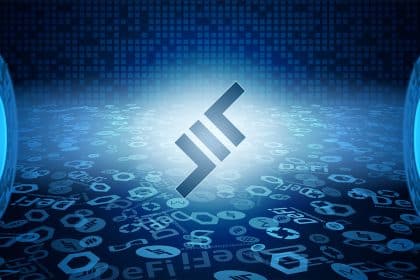Over 99% of voters in the Aave DAO have voted in approval of the platform’s over-collateralized GHO stablecoin.
Aave DAO recently voted on the approval of creating GHO stablecoins. The community-led grants program ended its three-day voting session with nearly 100% of approvals from participants. The near-unanimous votes also saw participants pledge five hundred thousand AAVE in approving the decision to create the GHO stablecoin. Furthermore, the stablecoin will have the backing of over-collateralized assets that continue to earn yield.
Following the proposal’s approval, the price of Aave’s native AAVE token spiked soon after to around $108 from $95.40. As of press time, AAVE was changing hands at $102.50, which is a 4.5% rise in the last 24 hours.
Aave to Focus on Implementation Following GHO Stablecoin Approval
After a successful vote that ended in approval for GHO, Aave DAO will now focus on creating the stablecoin. The governance body for the Aave DeFi protocol intends to achieve this through a new Aave improvement protocol (AIP). However, the introduction of GHO will presumably take a while as it undergoes its implementation phases. Furthermore, the DAO will be in charge of administering the GHO stablecoin upon its creation.
Aave founder Stani Kulechov also previously mentioned that the project plans to increase organic adoption for GHO on Ethereum’s Layer 2.
Aave users looking to mint GHO will be able to do so by first depositing crypto accepted by Aave. However, these digital currencies will have to be among those listed as collateral-worthy by the platform. In addition to acting as collateral, these deposits will earn interest yields for users. Furthermore, the lending protocol will charge interest on stablecoin loans taken out in GHO by borrowers. Payment proceeds from the interest will go back to the Aave DAO, which will also determine the native interest rate of the stablecoin.
Also, deposits allocated to mint GHO will have to exceed the value of GHO received, hence the loan over-collateralization. Furthermore, upon repayment of user loans or liquidation, lent GHO will be burned from the protocol.
Aave DeFi Protocol
Aave is a decentralized, non-custodial market protocol that facilitates crypto lending and borrowing among users. In addition to being privy to liquidity in the crypto market, users can also earn passive income on smart contract-allocated digital assets. According to Aave’s website, the platform is open source and has around $9.8 billion in liquidity.
With the creation of its stablecoin, Aave is on course to join a select group of DeFi stablecoin issuers which includes MakerDAO. Furthermore, according to much earlier reports, this list may soon expand further as Curve Finance is currently exploring the possibility of launching a decentralized stablecoin.
According to current CoinMarketCap data, the market capitalization of all stablecoins sits at more than $153 billion. At the summit of this pile are Tether’s USDT and Circle’s USDC, with a market cap of $66,220,106,880 and $54,441,805,557, respectively. Although stablecoins are becoming more popular, the US Congress has delayed its legislation on stablecoins until after the August recess.
next